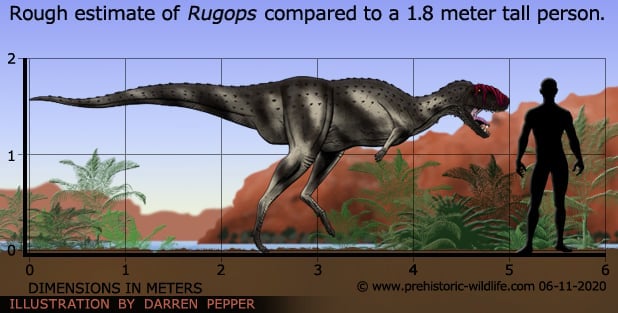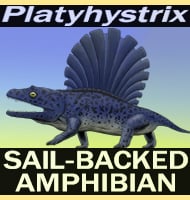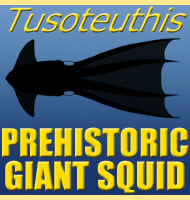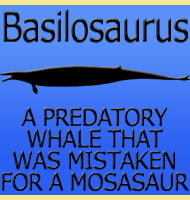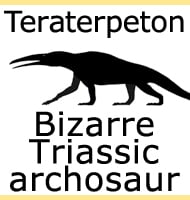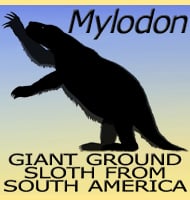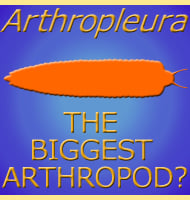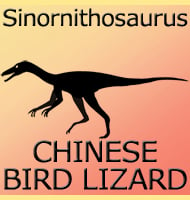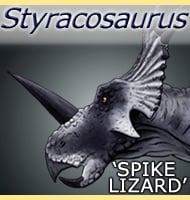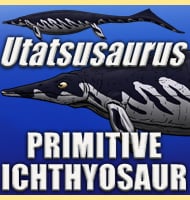In Depth
Rugops, meaning ‘wrinkle face’, is an interesting name for a carnivorous dinosaur. This name comes from the numerous impressions in the skull bone from large blood vessels that once ran across the bone surface leaving a wrinkled appearance. It is thought that these extra vessels were here to provide additional oxygenated blood to special facial display features so far not seen in any other theropod. These blood vessels could have also allowed for a ready supply of blood allowing Rugops to flush blood into the soft tissue of its snout for the purpose of a vivid colour display. Alternatively Rugops may have had some kind of armoured covering over its face.
Many of the carnivorous theropod dinosaurs have been accused of being scavengers, but in the case of Rugops it may be an accurate assumption. Abelisaurids are known for their proportionately weaker bite forces, especially when compared to the mighty tyrannosaurids of the late cretaceous, but Rugops also had teeth that seem to be much weaker than its other abelisaurid brethren.
A possible scenario for a scavenging lifestyle can be inferred from possible special facial features as evidenced by the presence of blood vessels. It could be that Rugops flushed blood into the soft tissue of its snout or sported some kind of soft tissue feature that allowed it to intimidate other carnivores from a carcass by making itself appear more threatening than it actually was. By acting big and scary Rugops could avoid actually having to be so.
Rugops was the first abelisaurid dinosaur found in Africa, with previous members being discovered in Madagascar, India, and most importantly for this text South America. Madagascar was formed when it split from the Indian Sub-Continent and as such abelisaurids could not cross from Madagascar to Africa of vice versa. This means that the only viable origin of North African abeilisaurids was South America. For this reason the existence of Rugops is held up as proof that not only were South America and Africa once joined, land bridges existed between the two continents after they had split, allowing for new and different kinds of dinosaurs to spread across the globe into new continents.
Further Reading
– New dinosaurs link southern landmasses in the mid-Cretaceous. – Proceedings of the Royal Society of London B 271(1546):1325-1330 – P. C. Sereno, J. A. Wilson, & J. L. Conrad – 2004. – Allometry and body length of abelisauroid theropods: Pycnonemosaurus nevesi is the new king. – Cretaceous Research. 69: 71–89. – O. N. Grillo & R. Delcourt – 2016. – R�cords y curiosidades de los dinosaurios Ter�podos y otros dinosauromorfos, Larousse. Barcelona, Spain p. 256. – Molina-P�rez & Larramendi – 2016.
